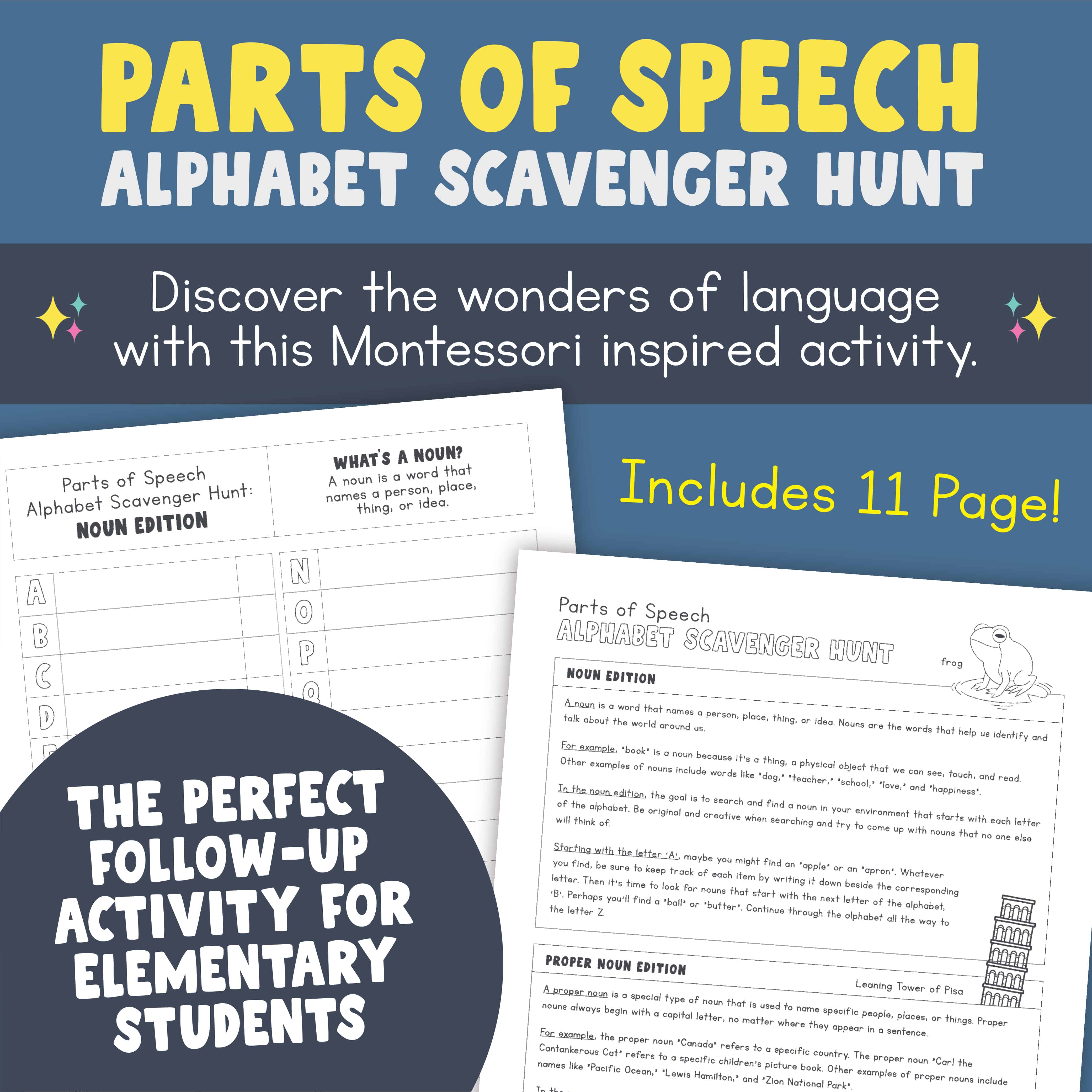Beat the Summer Brain Drain: 9 Powerful Ways to Keep Your Kids’ Minds Sharp
The ‘summer brain drain’ is a well-known phenomenon where students lose up to two months of math and reading skills during holiday breaks.
As a seasoned Montessori elementary teacher and a step-mom, I understand the importance of engaging activities to prevent this decline.
In this article, we’ll explore nine strategies to keep elementary students actively learning throughout the summer break. Stay tuned as we outline our solution to the summer slide.
The Perfect Solution to the Summer Brain Drain
Summer slide research shows that the summer brain drain can have a significant impact on a child’s academic success.
In fact, studies have shown that by the time students reach high school, two-thirds of the achievement gap can be attributed to summer learning loss.
This is because during the summer students are less likely to engage in activities that promote learning, such as reading, writing, and math.
But don’t worry, we have the perfect solution: learning in disguise!
Using fun activities that also teach will keep elementary students interested and learning all summer long.
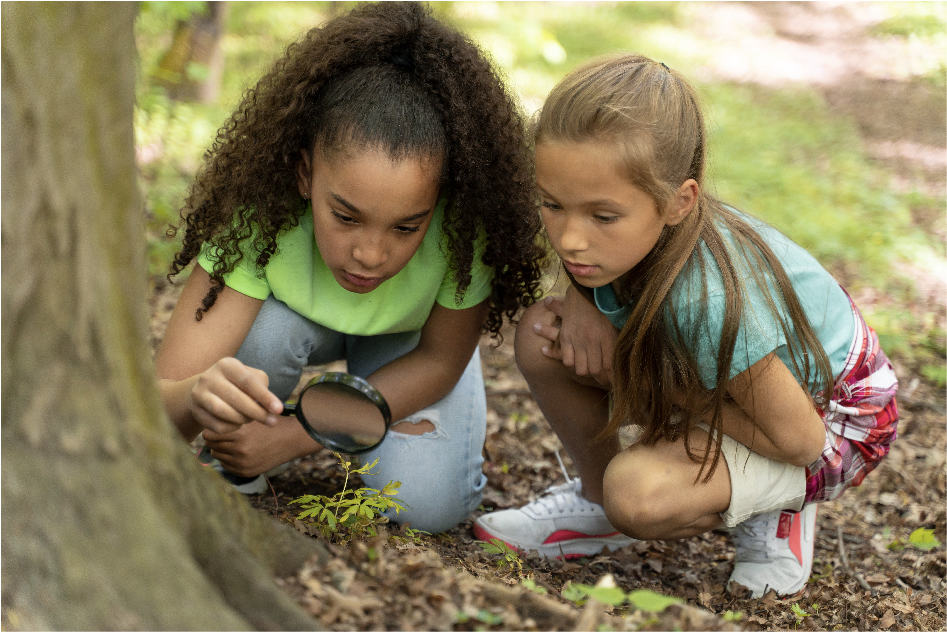
Keep reading to learn about our favourite methods to keep kids engaged and having fun while they avoid the summer brain drain with hands-on learning experiences. 👇👇👇
9 Ways to Avoid the Summer Brain Drain
Thankfully, with a little creativity and strategic planning, we can empower elementary students to thrive during the summer months and prevent the dreaded summer learning loss.
Here are 9 ideas I suggest to parents who are wanting to keep their child’s academic skills sharp over the summer break:
1. Encourage All Sorts of Reading
Get kids to read over the summer? Sounds like a daunting task, I know. But fear not, you can make it fun and engaging!
Make reading a desirable activity by setting up a family book club or by creating a cozy reading nook at home. Also think about taking turns reading aloud with your child because not only is it a great way to bond, but it also improves their reading and listening skills.

For reluctant readers, try incorporating technology by using e-readers or audiobooks. Or take them to a library or bookstore and let them explore.
💡 Teacher Tip: Level up reading with activity pages!
Discover digital treasures that go beyond the story by seeking out reading material that offers activity pages for endless learning and fun.
Pairing reading with engaging activities creates an immersive experience that sparks curiosity and ignites young minds.
Get them reading anything and everything to avoid the summer brain drain!
As a teacher with a lot of experience in elementary classrooms, I can confidently tell you that it doesn’t really matter if it’s a fact book about horses, a graphic novel with silly characters, a joke book, a how-to book to learn a craft or even a book to teach them a skill they’re interested in.
All that really matters is that you get them to read something that interests them, something that really holds their attention – and they will keep reading!
You see, it’s not about what they’re reading, it’s about getting them to enjoy the act of reading by realizing it’s everywhere. The hope is that they fall in love with reading all sorts of things.

💡 Teacher Tip: Let them discover reading material they love!
Empower young readers by involving them in finding things to read that truly captivate their interests. Encourage them to explore a wide range of book topics, genres, authors, and illustrations but also have them keep an open mind to reading magazines, comics, newspaper articles, and even blog posts.
Let their curiosity guide them as they uncover the reading materials that ignite their imagination and foster a lifelong love for learning.
Here are some reading materials that might interest your curious kids:
🧑🏼🍳 Best reading material for food lovers:
The Help Yourself Cookbook for Kids: 60 Easy Plant-Based Recipes Kids Can Make to Stay Healthy and Save the Earth.
This cookbook empowers children to create delicious plant-based meals while developing their cooking skills. Not only does it promote healthy eating habits, but it also instills environmental consciousness, making it the perfect guide for kids who want to nourish their bodies and make a positive impact on the planet.
😸 Best reading material for enhancing their vocabulary:
Carl the Cantankerous Cat
This is the ultimate picture book for cat lovers! With its delightful illustrations and a heartwarming storyline, this book captures the essence of feline charm and mischief. Follow Carl’s adventures as he navigates the world with his unique personality, providing endless entertainment for cat enthusiasts of all ages.
🦡 Best reading material for animal lovers:
The Illustrated Encyclopaedia of Ugly Animals
With its captivating illustrations and fascinating facts, this book showcases a unique collection of extraordinary creatures that are often overlooked. It celebrates the diversity of the animal kingdom, shedding light on the unconventional beauty found in the natural world. This encyclopedia is an invaluable resource that fosters a deep love and understanding of animals among elementary readers.
🎨 Best reading material disguised as an activity book:
The Draw, Doodle, Scribble, Think, Create Activity Book for Kids
Packed with 10 engaging prompts, imaginative exercises, inspiring artwork, and room to get creative, this book unleashes the artistic potential of young minds. From doodling to drawing, scribbling to thinking, this activity book provides a captivating and educational journey that encourages self-expression and nurtures critical thinking skills. Your kids need this activity book with unique drawing prompts for endless hours of interactive fun.
📚 Here are a few more!
🕵🏼 Best reading material for facts:
National Geographic Kids Almanac 2024
🌍 Best reading material for environmentalists:
Trash Revolution: Breaking the Waste Cycle
😃 Best graphic novel style reading material:
Smile
Make reading a learning-in-disguise experience this summer!
This technique works for a wide variety of learners, but as a teacher, I found that when faced with resistant readers, integrating reading into other enjoyable activities proved to be an effective strategy for capturing their interest.
Learning in disguise is the best!
In the case of reading, learning in disguise would mean you are seamlessly blending reading with fun and engaging experiences – things that the children are interested in and that pull their attention.
As a result, students often not only develop a love for reading but also acquire knowledge and skills without even realizing they’re learning.
When I make learning fun, my students’ engagement increases, and so do their overall literacy skills, comprehension, and desire to explore different types of reading materials.
Ultimately, this approach not only facilitates their academic growth but also instills a lifelong passion for reading a variety of things, enabling them to become avid learners beyond the classroom.

Here are a few ways you can encourage reading by making it fun:
🏋🏼 Follow an exercise plan;
🧁 Follow a recipe;
🎲 Follow the instructions for a math game with dice;
🐶 Read about how to care for a dog, a cat, or any pet they’re interested in;
🏃🏻 Do a fun scavenger hunt;
💭 Follow instructions and create a personalized dream board;
📖 Start a family book club;
📺 Watch TV and movies with the subtitles on;
📔 Bring a book everywhere you go;
⛺️ Create a reading fort;
🎥 Host a book-themed movie night;
👨🏼🎤 Organize a book-themed costume party;
💬 Add a word of the week to their schedule;
☀️ Try any one of these 31 summer reading activities.
The options are limitless. Explore their interests and watch them build their reading skills without even knowing it! 🤩
Play, read, experience!
Integrating reading with hands-on activities and games proved to be another excellent way to make learning enjoyable for my students.
For example, organizing scavenger hunts where students are tasked with reading clues and locating hidden objects related to something they are learning in class not only enhances their reading skills but also fosters a sense of excitement and adventure around reading and learning.
Similarly, incorporating board games or interactive online platforms that require reading comprehension helps students develop critical thinking abilities while having fun.
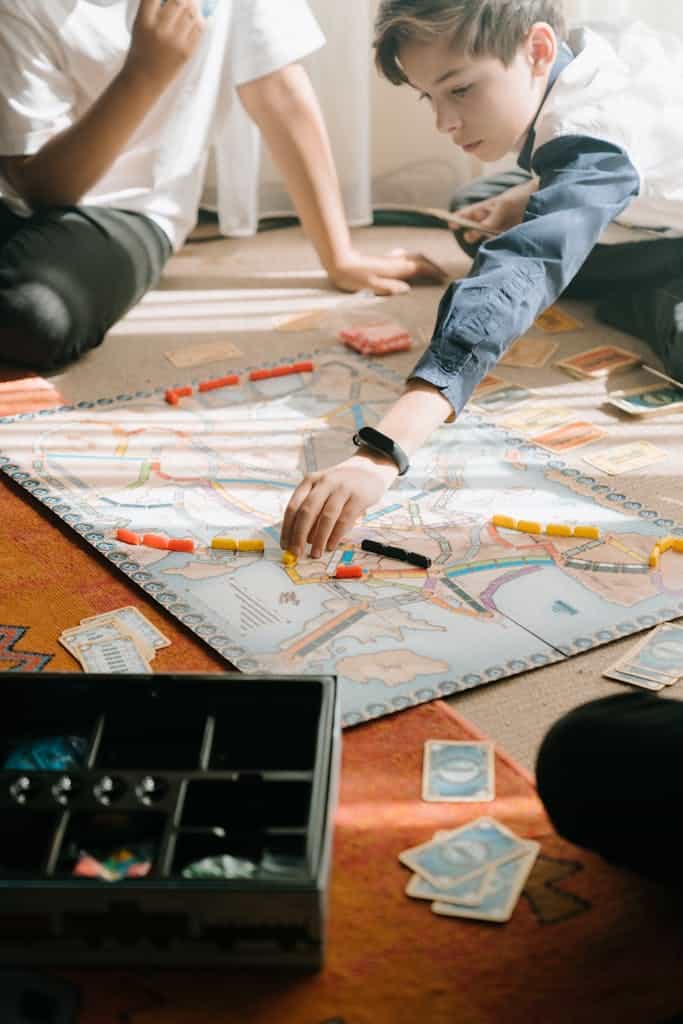
Another effective approach to making reading fun and purposeful was connecting it to real-world experiences.
Field trips and going out experiences to the library, bookstores, farmer’s markets, grocery stores, or even local community centers provide students with ample opportunity to read different things and they may even discover new topics of interest.
Learn about the benefits of reading!
Believe us when we say that reading is a gateway to endless possibilities!
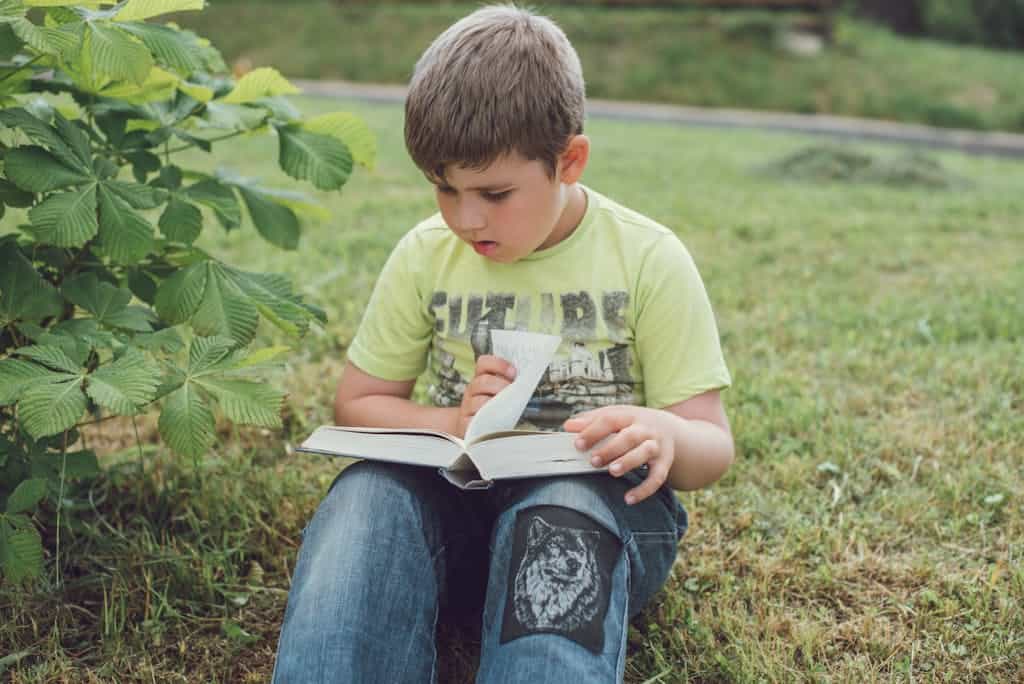
Encourage children to explore the magic of books because reading:
📚 boosts language development;
📚 enhances communication skills;
📚 sparks curiosity;
📚 teaches valuable life lessons;
📚 creates room for empathy;
📚 improves memory retention;
📚 expands cultural awareness;
📚 enhances concentration and focus;
📚 fosters imagination and storytelling abilities;
📚 improves reading fluency and comprehension;
📚 develops analytical and problem-solving skills;
📚 enhances emotional intelligence;
📚 provides a window into different perspectives and experiences;
📚 empowers individuals to express themselves effectively;
📚 supports academic success across various subjects;
📚 inspires a love for lifelong learning.
I could go on.
Reading truly has the power to combat the summer brain drain and helps keep young minds sharp throughout the summer season.
☀️ Check out summer reading activities for elementary-aged kids here!
2. Play Educational Games with Dice
As a teacher, I find dice games to be a great tool to avoid the summer brain drain because they’re an enjoyable way for students to maintain and improve many important skills learned throughout the school year.

🎯 Games are highly beneficial for elementary learning. Read about it here!
They provide a hands-on and interactive experience that engages children and let’s be real, dice just make learning more fun. And when kids are having fun, they’re way more likely to want to play along for long periods of time, even if it is a math game.
🎲 Teacher Tip: Here’s a fun way to boost math skills with dice!
Get elementary kids excited about math while tapping into their love for gaming with our engaging Math Bingo Dice Game Printable.
This dynamic activity combines the thrill of rolling dice with the challenge of solving math equations, providing a fun and effective way to combat the summer brain drain.
And don’t stop with dice, check out this card game for kids:
Elevate Elementary Math Skills with This Exciting Math Card Game
You’ll also want to try this awesome dice game! It’s a student favourite in my upper elementary classroom. 👇 ⏰ 🎲
🎲 Looking for a great set of dice?!?
Be sure to read our 21 Fun Math Games with Dice because it includes a FREE DICE PRINTABLE that children colour, cut, fold, and then play with!
Add dice games to your language lessons, too!
Dice games aren’t just for math you know.
They are a fun and engaging way to enhance language skills in children of all ages. By incorporating vocabulary words and language concepts into gameplay, children can practice using language in a meaningful and fun way.
Try some of these simple language dice games!
To avoid the summer brain drain, incorporate these language dice games into your summer learning plan to add an element of excitement and interactivity. They provide a playful way to reinforce language skills, vocabulary, grammar, and storytelling, making the learning experience enjoyable and engaging for elementary-aged kids.
🎲 Category Challenge
This game expands vocabulary, category knowledge, and word association skills. Players also practice their addition and subtraction. Yay, math practice!
How to Play:
One six-sided die is needed and each of the six numbers on the die will correspond to different predetermined categories, such as animals, colours, books, or food.
Here’s an example of what your list might look like:
The more specific you are about the categories the better!
1. 📐 Things that are triangle shaped
2. 🥦 Green vegetables
3. 👟 Things you wear
4. 🛞 Things with wheels
5. 🍎 Red fruits
6. 🦩 Animals with wings
Players take turns rolling the die to determine the category they will need to generate words for.
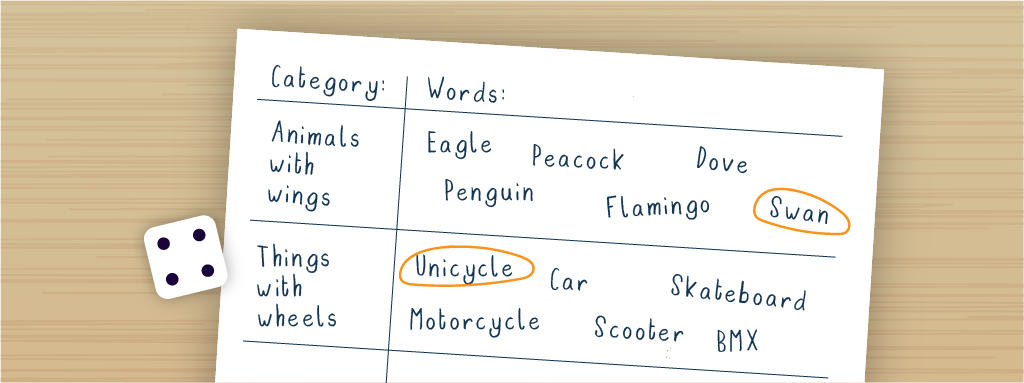
After each roll, players will have thirty seconds to brainstorm words related to the category indicated by the die. They can jot down all their ideas but must ultimately choose one word that they deem the most original.
Once the thirty seconds are up, players will compare their chosen words with the rest of the group.
Scoring is as follows:
➡️ Players earn 1 point for presenting a word that is unique and not chosen by any other player.
➡️ If a player cannot think of a word for the category within the given time, they lose 1 point.
➡️ If multiple players present the same word, all players with that same word score zero points for the round.
This scoring system rewards originality, challenges quick thinking, and encourages players to come up with unique words.
✨ Teacher Tip: Put the students to work!
Have students work together to come up with the list of six categories without the help of an adult because, well, that’s so Montessori!
✨ Bonus Teacher Tip: Add more math to the mix!
Change the point system to make the outcomes worth more. Using different numbers for scoring will lead to even more math practice.
Example: Score 7 points for an original answer, score only 4 points for a shared answer, and lose 3 points for no answer at all!
🎲 Roll A Story Dice Game
With this type of activity, children will generate enough ideas and excitement to put together one fascinating fiction story!
How to Play:
Have players use our printable Roll A Story Dice Game (or something similar) to roll their way to writing a creative story.
Story dice are great for reluctant writers, developing imaginative minds, and encouraging students to use their creativity. Plus, it makes for an excellent activity to beat the summer brain drain.
Our build-it-yourself dice game includes 8 printable 2D nets that you can assemble into dice, each featuring a different story element.
The images on each die are engaging, thought-provoking, and open to interpretation, sparking students’ story-writing ideas with just the right amount of guidance.
And the best part is, activities like Roll A Story can be enjoyed repeatedly, ensuring endless fun and writing opportunities!
💡 Teacher Tip: You can use this one product in so many different ways!
Discover endless creative writing possibilities with a variety of activities you can try with our Roll A Story Dice Game.
Read our blog The Best Story Dice and 11 Interesting Ways To Use Them to explore the full potential of this super awesome language activity.
Add this to your list of summer reading activities for elementary kids and you’ll be saying goodbye to summer brain drain and hello to educational fun!
🎲 Parts of Speech Dice Game
Get ready to make learning grammar fun and interactive with this parts of speech dice game. Elementary students will explore nouns, verbs, adjectives, and more as they roll their way to language mastery.
💡 We wrote a detailed blog covering the 8 parts of speech, perfect for elementary educators.
And don’t miss out on the educational and enjoyable videos featured in our blog Parts of Speech Videos for Your Elementary Language Lessons.
Check them out!
Here’s a quick refresher on the 8 parts of speech and their functions:
🐕 Noun: Represents a person, place, thing, or idea.
🔥 Adjective: Describes or modifies a noun or pronoun.
🐾 Pronoun: A word used in place of a noun to avoid repetition.
🏃🏽♂️ Verb: Expresses an action, occurrence, or state of being.
💪🏽 Adverb: Modifies or describes a verb, adjective, or another adverb.
🔗 Conjunction: Connects words, phrases, or clauses within a sentence.
📥 Preposition: Shows a relationship between a noun or pronoun and another word.
🗯️ Interjection: A word or phrase that expresses strong emotion or sudden feeling.
How to Play:
Choose 6 of the 8 parts of speech to work with and number them from 1 to 6 like the example below. They can be placed in any order.
Players take turns rolling a die and coming up with a word for the part of speech that corresponds to the number they land on.
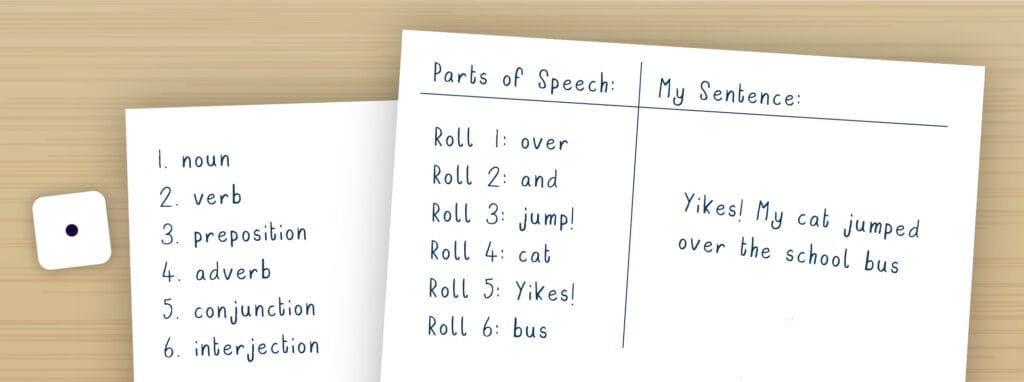
After a predetermined amount of rolls or a set period of time, players will use the words they have come up with from their rolls to write a sentence that makes sense. They can add the other parts of speech that are not in play, in the example below it’s the pronoun and the adjective, to their sentence as they see fit.
And of course, the article (which is actually an adjective) can also be freely added to their sentence.
Personally, I like when each player gets 5 or 6 rolls of the die per game. That gives them a good amount of words to work with when creating a sentence. With older and more advanced students I’ll up the ante and require them to have 8 to 10 rolls per game. Those always make for interesting sentences, and discussions on run-on sentences! Just be ready for teachable moments to arise with this game!
Players can share their sentences with each other to finish off this activity.
💡 Teacher Tip: Encourage them to explore verb tenses!
When students roll the die and land on a verb, it’s a fantastic opportunity to not only focus on the chosen verb but also expand their understanding of verb tenses.
For example, if the verb selected is “jump,” students can explore different verb tenses by conjugating the verb to make sense within a sentence.
Encourage students to think beyond the basic present tense and explore past, future, and progressive verb forms. They can create sentences like “I jumped over the hurdle yesterday,” “We will jump over the hurdle tomorrow,” or “She is jumping over the hurdle now.”
By reminding and encouraging students to use different verb tenses, you are helping them develop a more comprehensive understanding of how verbs change based on time and context.
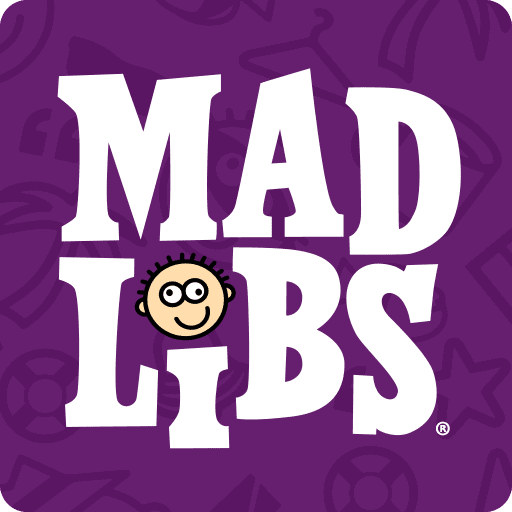
💡Teacher Tip: Additional Parts of Speech Practice!
Encourage elementary students to use the engaging Mad Libs app for language skill development.
It offers a creative platform to reinforce and enhance language skills.
🎲 Play any or all of the 15 dice games in our blog:
We’ve put together 15 other educational games using three dice. Here you’ll find engaging activities that will help build a plethora of elementary skills.
The list contains 5 math games, 5 language games, and 5 physical education games, all using three dice. It’s a valuable resource worth reading and saving for future reference.
Here’s another fun and simple story-writing dice game to play with kids:
Who doesn’t love a good group story-building activity with dice? I sure do!
3. Practice Math Skills in Real Life
As a teacher and step-mom, I’ve noticed that math skills tend to suffer the most during the summer break.
However, by incorporating math into everyday activities and using fun games and resources, you can help your child maintain and even further build their math skills, preventing the dreaded summer learning loss.
Here are some engaging ways to put a stop to the summer brain drain by practicing math skills in real life:
🛒 Grocery Store Math
Engage kids in visits to the grocery store by involving them in activities such as couponing, comparing prices, calculating discounts, weighing fruits or vegetables, estimating the total cost of items, or counting money to pay.
This hands-on experience helps children understand the practical application of math in everyday situations.

🧑🏽🍳 Cooking and Baking
Involve elementary-aged children in cooking or baking activities where they can measure ingredients, follow recipes, understand fractions and measurements, and even learn about temperature and time.
These activities reinforce concepts like addition, subtraction, multiplication, division, and fractions all while making delicious treats.
🪴 Gardening
When you’re working in the garden, have your elementary-aged child join in! They can measure the dimensions of plant beds, estimate the volume of soil needed, and calculate watering or fertilizing amounts. This integrates math with science and allows for hands-on learning.
Teach those budding gardeners all about seeds before they get their hands in the dirt!
♟️ Board Games and Card Games
Play games that involve mathematical operations and problem-solving.
Try some of these games:
🪄 Proof! Math Game – The Fast Paced Game of Mental Math Magic;
🎩 Monopoly;
🔴 Math Fact Practice Bingo Printable;
🔢 Sudoku for Kids;
🃏 Multiplication Math War Card Game;
🔑 Crypto Math Riddle Digital Game Board.
These games improve critical thinking, strategic planning, and mathematical fluency in an enjoyable and interactive way.
📐 DIY Projects and Crafts
Engage in DIY projects where your child can measure and (safely) cut materials, estimate quantities, and follow step-by-step instructions. This hones their spatial awareness, measurement skills, and ability to interpret diagrams or patterns.
Combat the summer brain drain with these engaging and hands-on DIY activities for kids!
🔢 Math Apps and Online Resources to Beat the Summer Brain Drain
Explore educational math apps and online resources that offer interactive games, puzzles, and challenges tailored to different age groups. These platforms provide a gamified approach to learning math and can make practice enjoyable.
Keep reading for more! We expand on this idea further in section #4 of this blog.
🍋 Encourage Kids to Start a Small Business
Get them to learn about money and its value the good old-fashioned way! A lot can be learned from running a lemonade stand, a garage sale, or a small business selling homemade goods.
Encourage your kids to read Kid Start-Up: How YOU Can Become an Entrepreneur by Mark Cuban. Start a conversation with them about ways they can make money and what that looks like.
You’ll be amazed by the creative ideas your young entrepreneurs will generate!
📏 Measurement in the Real World
Provide opportunities for kids to explore measurement by engaging in real-world activities.
From measuring their height, preparing ingredients for a recipe, or even building something, there are endless opportunities to explore and learn.
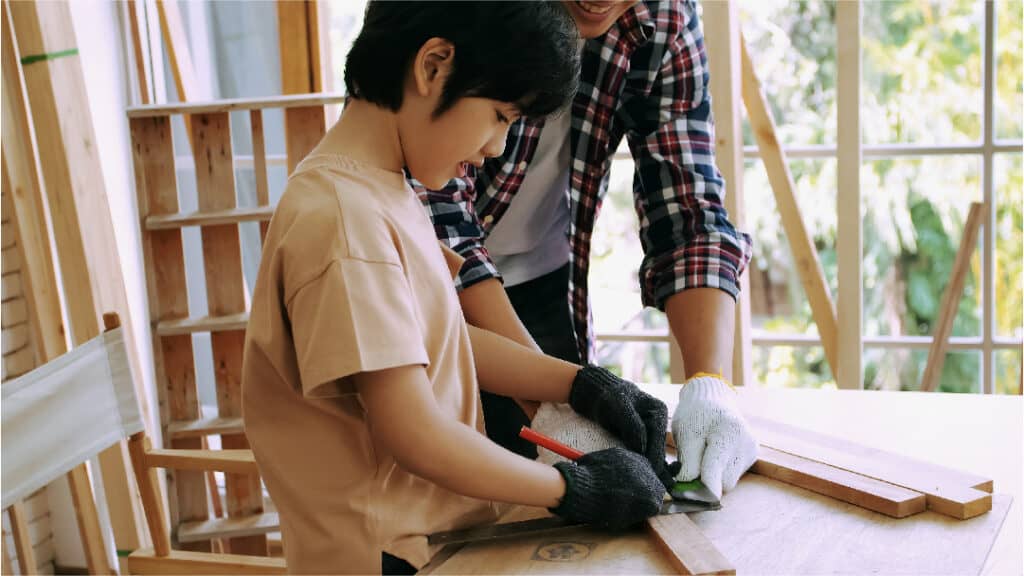
Here are some more fun ways to learn through measurement:
🏃🏽♂️ Measure the length of their stride or the distance they can jump.
🥤 Pour water into different containers to measure volume using measuring cups.
⚖️ Weigh various foods with a kitchen scale or balance.
🌳 Measure the circumference of objects like tree trunks or their own head.
Plus, don’t forget to use maps to calculate distances between places! And for an extra challenge, delve into telling time by creating a daily schedule or using analog clocks.
Get ready for a summer of hands-on learning and fun with measurement!
🌍 Learn about Money Through Books
Learning about money through reading money books for kids offers a practical and engaging way to reinforce math skills while also preventing the summer brain drain in elementary students.

By exploring the concepts of earning, saving, and spending money, children develop essential financial literacy skills and apply mathematical concepts in real-life scenarios.
These books provide a valuable opportunity for children to understand the value of money, make informed decisions, and develop critical thinking skills, all while enjoying the immersive world of storytelling.
Here’s a list of just some of the money books elementary-aged kids – our beloved children in the second plane of development – can read and learn all about money over the summer break.
💰 The Coin Counting Book by Rozanne Lanczak Williams
💰 Alexander Who Used To Be Rich Last Sunday by Judith Viorst
💰 Finance 101 for Kids: Money Lessons Children Cannot Afford to Miss by Walter Andal
💰 How to Turn $100 into $1,000,000: Earn! Save! Invest! by James McKenna, Jeannine Glista, and Matt Fontaine
💰 The Everything Kids Money Book by Brette Sember
They can improve their math skills and learn about saving by making their own paper bank machines!
4. Sign Your Kids Up for Summer Programs
Enrolling your child in summer programs is a fantastic way to combat the summer brain drain and provide them with valuable learning opportunities.
Look for local summer programs.
There are various summer programs available for elementary students that offer learning in disguise opportunities! These programs cover a wide range of subjects and activities, catering to various interests and age groups.
Some summer programs focus on specific subjects like nature, science, technology, engineering, and mathematics (STEM), where children engage in hands-on experiments, coding projects, and robotics.
Others may offer arts and crafts workshops, theatre productions, or music lessons, fostering creativity and self-expression.
To explore these options, I recommend inquiring around your community and reaching out to your school board for more information on available summer programs.

By enrolling your child in a summer program, you provide them with structured learning experiences that foster personal growth, social interactions, and intellectual stimulation outside of their typical learning environment.
They will retain their academic skills, discover new passions, and build confidence, setting them up for success in the upcoming school year and beyond.
Enroll them in summer programs to enjoy a season packed with enriching experiences, new friendships, and plenty of chances for growth and learning. It’s the perfect antidote to the summer brain drain!
Discover the world of online summer classes!
When it comes to summer learning, don’t limit yourself to traditional in-person programs. Embrace the exciting realm of online summer courses, where a vast array of captivating subjects and topics await.

Online summer classes offer a unique opportunity for elementary students to access a world of knowledge from the convenience of their own homes. With a virtual format, these courses provide flexibility and accessibility, allowing young learners to explore various subjects at their own pace.
OutSchool is a great example of this and has an expansive list of online classes and teachers to choose from. There are short courses, long courses, live, and pre-recorded, really there’s something on there to meet the needs and desires of all students!
Here are some of our favourite Outschool courses:
🌍 Model UN Summer Camp – United Nations and Politics for Beginners
💬 Introduction to Debate Summer Camp for Elementary Students
🤓 Groovy Greeks Summer Camp – An Adventure Through History
📈 Stock Market – Investing for Beginners Part 1
🛠️ Fun STEM Cooking Summer Camp
🎸 1:1 Summer Music Lessons

💡 Teacher Tip: Turn your teaching skills into profit with Outschool!
Looking for a way to make some extra money using your teaching skills? Why not create your own classes and teach them on OutSchool?
I’ve had only positive experiences teaching students my own unique curriculum on OutSchool, and it’s been a great way to make extra money when I have the time to teach courses.
Get started teaching on OutSchool now! Use this link to get going!
5. Create a Flexible Yet Structured Summer Learning Plan
Another way to effectively avoid any summer learning loss is to set children up for success with a super flexible summer routine or schedule.
To combat the summer brain drain, it’s crucial to create a well-balanced schedule that includes structured learning time while keeping it enjoyable for children.
The key is to design a routine that aligns with their interests and can be followed consistently. It doesn’t have to be an hourly breakdown of each day, but rather a flexible framework that blends learning activities seamlessly into their daily lives. It also gives them some ideas of what they could be doing if they’re bored!
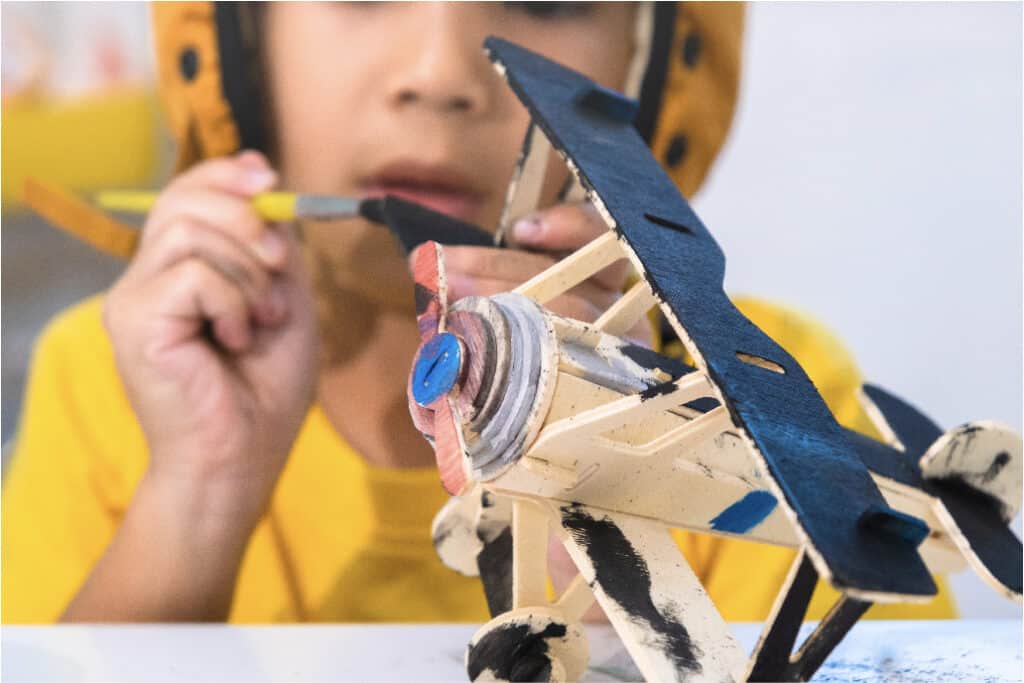
By integrating a variety of engaging and enjoyable activities into the routine, children can stay actively involved with academic content without feeling overwhelmed.
This can include reading books on topics they find fascinating, exploring educational apps or online platforms, engaging in hands-on experiments or projects, or even participating in educational games and puzzles.
The goal is to make learning a natural part of their summer experience, enabling them to acquire new knowledge and skills in a disguised and enjoyable manner.
FREE FOR A LIMITED TIME!
Subscribe to our newsletter and receive this Customizable Daily Activity Planner printable for free. Simplify your summer scheduling with ease!
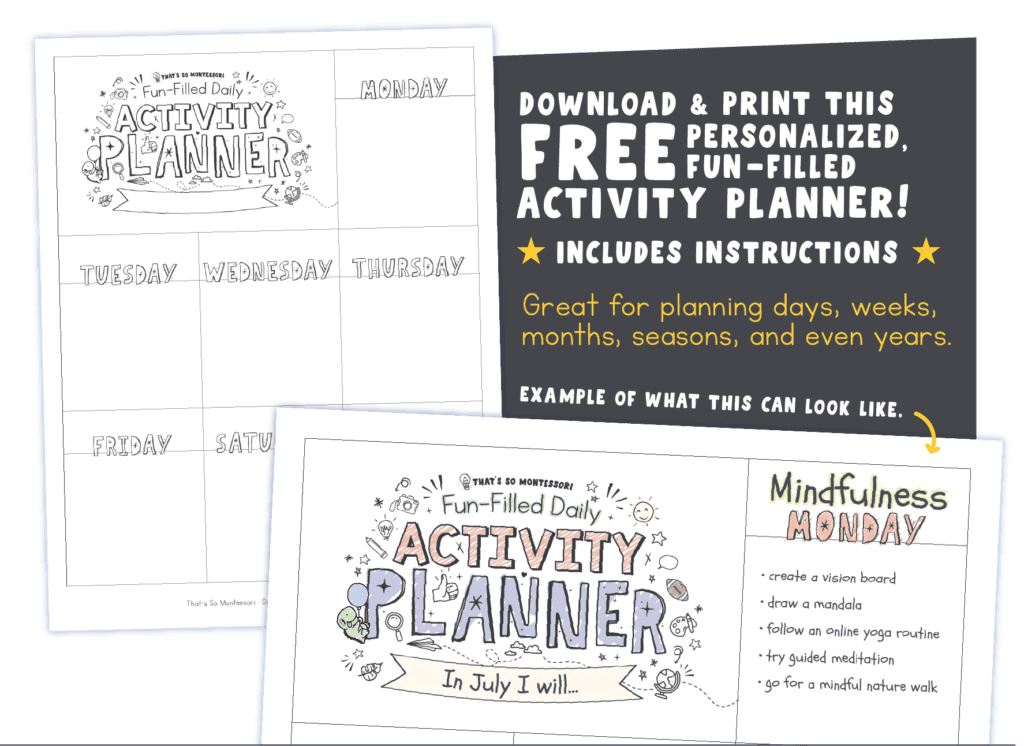
💡 Teacher Tip: Involve your kids in crafting a summer schedule!
Engage your children in creating their own summer learning schedule – it’s a game-changer!
When kids actively participate in crafting their schedules, they feel a sense of ownership and excitement. It’s about tapping into their interests and making learning a blast!
Kids often come up with brilliant ideas we adults may not even think of. Letting them take the lead fosters independence and develops crucial skills like time management and decision-making. Embrace this approach for a rewarding summer of learning!
Transform Your Week with Daily Themes!
Inject excitement into your summer routine by assigning a unique theme to each day of the week. Here’s a lineup of engaging themes that elementary kids love.
Feel free to use these as a model for your kid’s weekly summer schedule:
✂️ Make Something Monday
🕺 Try Something New Tuesday
🌎 Where in the World Wednesday
🧘🏼 Thoughtful Thursday
👟 Fitness Fun Friday
📍Sightseeing Saturday
🎥 Cinema Sundays
Make this summer one to remember by incorporating these exciting daily themes into your routine. Whether you choose to follow them as outlined or customize them to suit your family’s interests, the possibilities for adventure and learning are endless.
Here’s to a summer filled with fun, growth, and unforgettable experiences!
We’ve created a FREE PRINTABLE POSTER of positive affirmations
Join our monthly Newsletter and get this beautiful printable today!
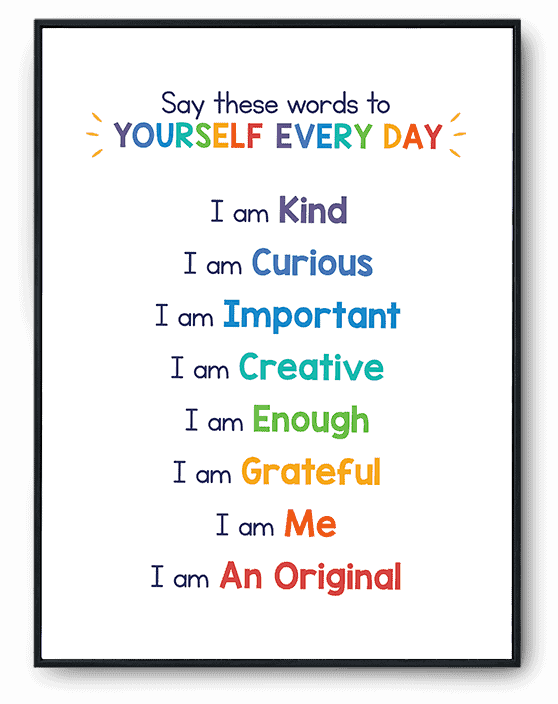
6. Going Out – Take a Purposeful Field Trip
In Montessori education, there’s a concept called ‘going out’ and it’s similar to the idea of taking field trips, but with one key distinction: the outings are planned by the students themselves.
This unique approach to exploration is filled with teachable moments, where students are empowered to take responsibility for their learning fostering independence, curiosity, and real-world engagement.
Gain a deeper understanding of the Montessori concept of “going out” and its significance in the second plane of development with the help of some insightful videos featuring Montessori educators.
To prevent the summer slide and keep kids engaged in learning, consider supporting your elementary-aged kids in organizing and carrying out a day trip or two so they can learn and explore what they are interested in out in the real world.
From science centers and art museums to city parks and historical landmarks, these going out destinations offer unique opportunities for children to explore and learn in a fun and engaging way as they take the initiative to research, plan, and arrange the logistics of their outings.
Talk to your child, follow their interests, and support them in planning a family field trip. By doing so they’ll expand their knowledge and passion for learning.
Not sure where to go?

Here are some ideas of places in your area that your child may want to visit:
🔬 Science Museum or Science Center
🖼 Art Museum or Art Gallery
🏰 Historical Sites or History Museums
🦉 Wildlife Sanctuary
🚜 Farm or Agricultural Center
🌳 Botanical Garden or Nature Reserve
🪐 Planetarium or Space Observatory
🎭 Children’s Theater or Performing Arts Center
Not only do these trips provide a break from the everyday summer routine, but they also offer hands-on real-life experiences that expose them to new ideas and experiences.
It’s important to note that going out doesn’t always have to stem from traditional field trips like going to museums or theaters. There are plenty of other options for engaging and educational experiences right outside your doorstep!
Consider activities like nature walks and scavenger hunts, which offer unique opportunities for exploration, learning, and fun. The best part? They are cost-effective and can be enjoyed as a family or with friends.
Want more going out ideas?
Here you go:
🪁 Visit Local Parks
🌿 Go on Nature Walks
🧩 Do a Scavenger Hunt
🌱 Explore a Garden
🔭 Observe the Stars
🐚 Collect Items from Nature to Make Art

Remember, while some of these activities won’t cost you a thing, or are not too expensive, they will require your time, involvement, and guidance.
By incorporating educational experiences into your child’s summer break outings, you can create valuable learning opportunities that are both enjoyable and easy on the wallet.
Don’t let the summer months lead to the dreaded summer brain drain! Instead, seize the opportunity to keep your child intellectually stimulated and motivated. By taking advantage of purposeful going out experiences near you or online, you can provide them with a continuous stream of engaging activities and something exciting to look forward to.
💡 Teacher Tip: Take that going out experience up a notch!
Enhance your child’s going out experience by incorporating engaging follow-up activities that deepen their connection and understanding.
Try these going out follow-up activities with your kids:
🗺 Travel Brochure
Look at travel brochures while you are out (if you come across any) and have elementary-aged children create their own colourful and informative travel brochures focusing on the place they visited.
They can include details about the attractions, historical facts, and interesting highlights. This project allows them to practice their research, writing, and design skills while sharing their experience with others.
📒 Going Out Journal
A going out journal is where kids can document their thoughts, observations, and sketches during the trip. They can write about their favourite moments, interesting things they learned, or any questions that arose.
This project promotes reflection, improves writing skills, and allows them to preserve their memories in a personal and creative way.
🎨 Artistic Expression
Suggest children express their experiences through art. They can create paintings, print photos, make collages, or even sculptures inspired by their outing, capturing the essence of what they saw, felt, and learned.
This activity provides a powerful medium for them to translate their observations, emotions, and newfound knowledge into tangible and visual representations.
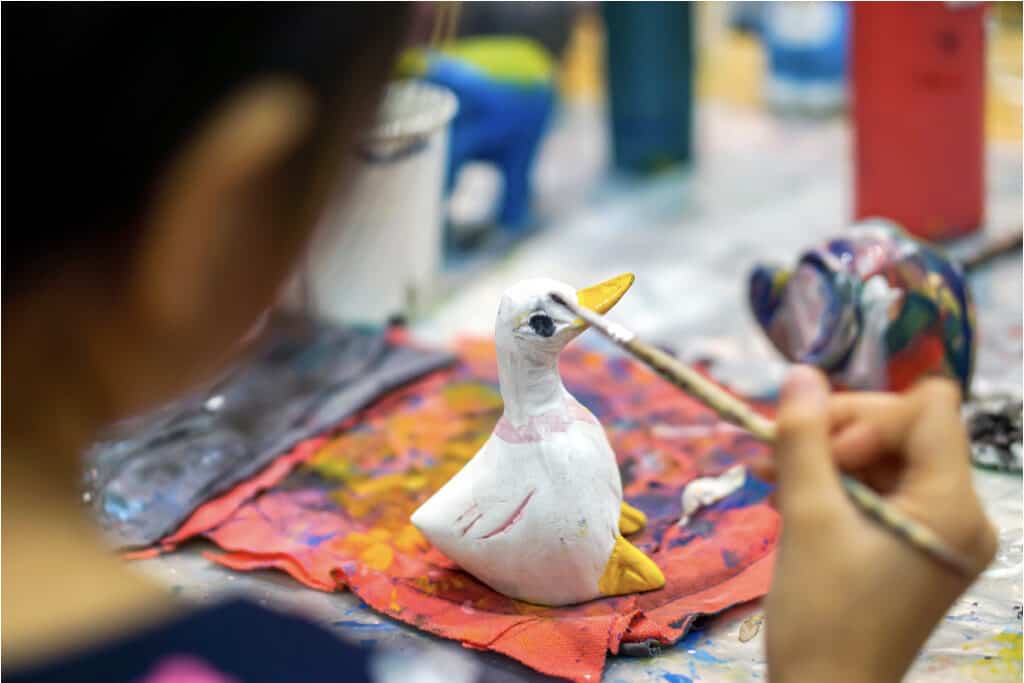
🗣 Presentation Time
Encourage kids to prepare a short presentation to share with the family or even their friends about their going out experience. They can use visual aids such as photographs, drawings, poster boards, or objects they collected during the trip.
This project helps improve their public speaking skills, boosts confidence, and allows them to become an expert on the topic, sharing their knowledge with others.
Remember to provide guidance and support but keep your hands to yourself throughout these mini projects, allowing the child to express their creativity and reflect on their field trip experience in their own meaningful way.
7. Encourage Physical Activity to Beat the Summer Brain Drain
To combat the summer slide, it’s essential to encourage physical activity alongside intellectual stimulation.
Embracing outdoor adventures like swimming, biking, or hiking not only fosters physical fitness but also supercharges cognitive function.

Exploring nature through activities like bird-watching or nature walks fosters curiosity, observation skills, and a deeper appreciation for the environment while also building muscular endurance. Adventure activities like rock climbing or obstacle courses promote problem-solving, resilience, and self-confidence while also building muscles!
But that’s not all. Physical activity goes beyond fitness – it profoundly impacts the brain. Regular exercise increases blood flow, enhancing focus, attention, and memory. And let’s not forget about those wonderful endorphins, the mood-boosting chemicals that reduce stress and elevate overall well-being.
So it’s time you seize the opportunity to weave physical activity into your child’s summer schedule and witness their minds and bodies thrive, as they build healthy habits that will not only build resilience and strength but also ignite a passion for exercising regularly.
Check out these great fitness videos for kids to follow along with:
Why not combine physical activity and learning with activities like these:
✅ Scavenger Hunts
✅ Historical or Guided Walking Tours
✅ Just Roll With It
✅ Plant Identification on a Hike
✅ Move Like an Animal Exercises
✅ Geocaching Adventures
Elevate summer excitement while defeating the summer brain drain by integrating physical activity into captivating fitness experiences this summer. Children will soak up knowledge, improve their fitness levels, and forge lasting memories through dynamic and immersive movement activities.
🎲 Discover Our Top-Rated Dice Games for Kids!
If you’re looking for incredible dice games to keep your kids engaged and entertained, you’re in for a treat.
Our collection of 15 Educational Games With Three Dice for Kids is packed with exciting options that will bring learning, smiles, and plenty of movement into your home.
You’ll find 5 exciting physical education games with three dice that will keep kids entertained and moving.
💡 Teacher Tip: Engage, Adapt, and Join in the Fun!
When it comes to educational activities, it’s important to adapt them to your child’s age, abilities, and interests. Every child is unique, and by tailoring the activities to their individual needs, you can create a more meaningful and enjoyable learning experience.

And be sure to join in on the fun!
By modeling movement and actively participating, you not only foster your child’s curiosity, physicality, and love for movement but also create a stronger bond and shared learning experience.
8. Digital Learning for Combatting Summer Brain Drain
We get it. Summer is all about unwinding and taking it easy. But guess what? It’s also the perfect time for making learning fun!
Thanks to the vast array of digital products, children are able to turn their summer break into a brain-boosting adventure. A lot of interactive apps are not only entertaining but also purposeful, ensuring that kids can avoid the summer slide and keep their minds sharp.
From captivating games that teach new skills to activities that are engaging and reinforce existing knowledge, it’s fair to say that when used in moderation educational apps offer a delightful way for children to stay connected with their education throughout the summer.
And while they’re having a blast, they’re also nurturing their intellectual growth and ensuring a seamless transition back to the classroom.
Embrace the power of digital learning this summer and unlock a world of fun-filled education!

Here are a few educational apps that we love for the elementary level:
✅ Reflex Math
✅ Math Bingo
✅ Khan Academy Kids
✅ Duolingo
✅ ABCmouse
✅ Homer
✅ Prodigy
Night Zookeeper is a great example of an online learning program that boosts kids learning. This game seamlessly disguises learning as it inspires and empowers students to unleash their imagination through storytelling and thrilling adventures.
Check out this tutorial video:
There’s also Hopscotch Coding. This app, designed specifically for young learners, provides an interactive and playful platform that introduces children to the fascinating world of coding and computer programming.
Here’s a video sample of a Hopscotch Coding lesson:
⚠️ Remember to review and assess the content and features of each app to ensure they align with your child’s educational needs and are suitable for their age group and abilities.**
Digital Resources Beyond Apps for Elementary-Aged Children
The options go beyond apps when it comes to digital resources.
Discover a world of possibilities with products like our engaging and ready-to-teach Google Slide lessons for elementary learners:
🔬 Periodic table of elements Lesson
🔢 Digital Math Games Lesson with Worksheets
😂 Math Jokes for Kids
🔑 Crypto Riddles Math Fact Practice
🟩 Digital Montessori Checkerboard Lessons
♟️ Digital Montessori Racks and Tubes Bundle
😺 Carl the Cantankerous Cat Digital Picture Book + Printable Activity Pack
🐸 Word of the Week Vocabulary Boosters + Printable Graphic Organizer
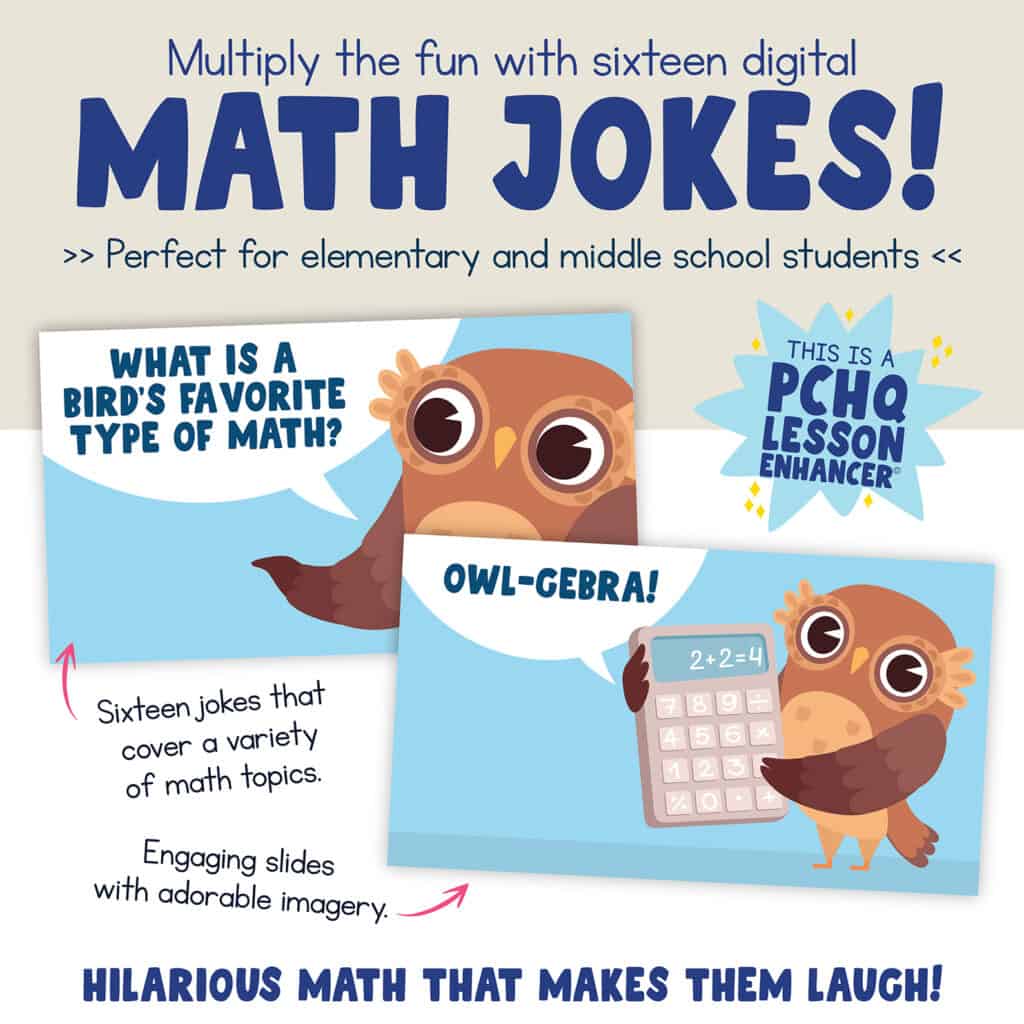
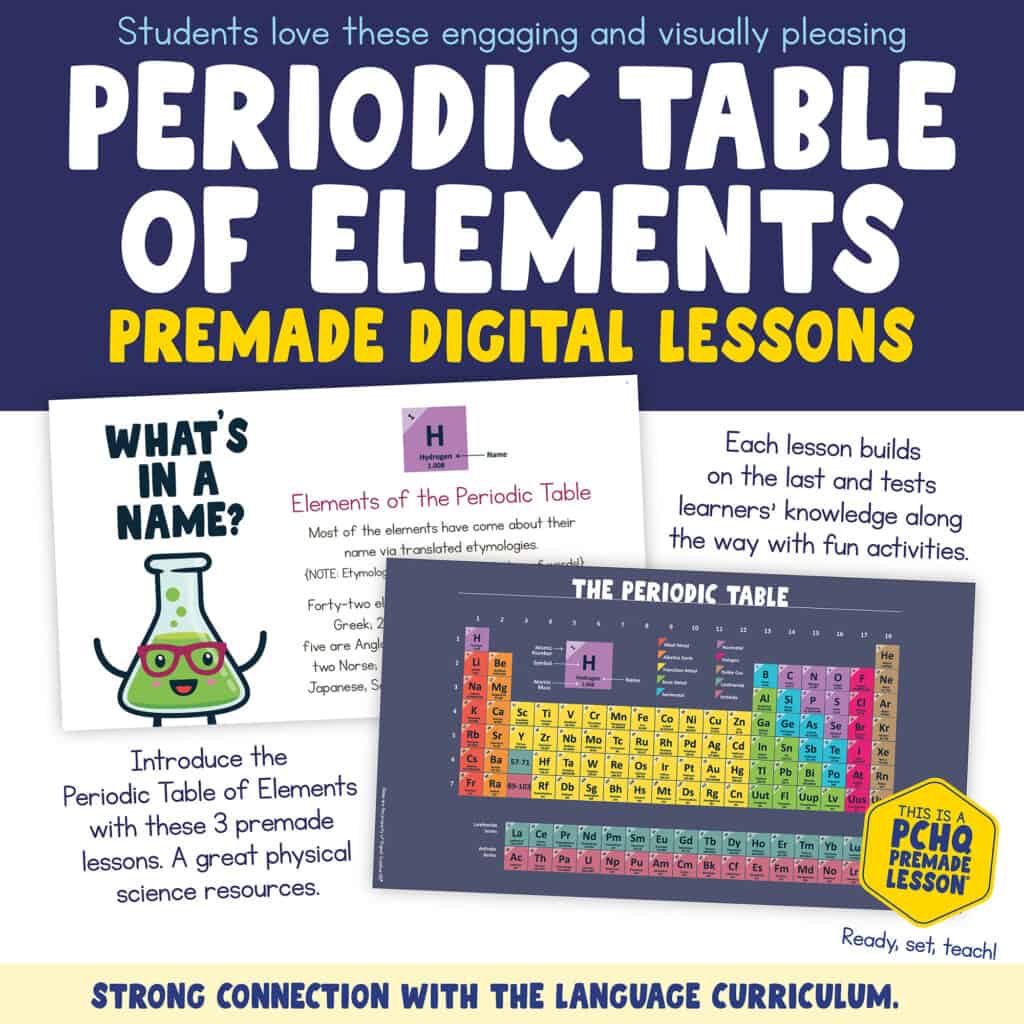
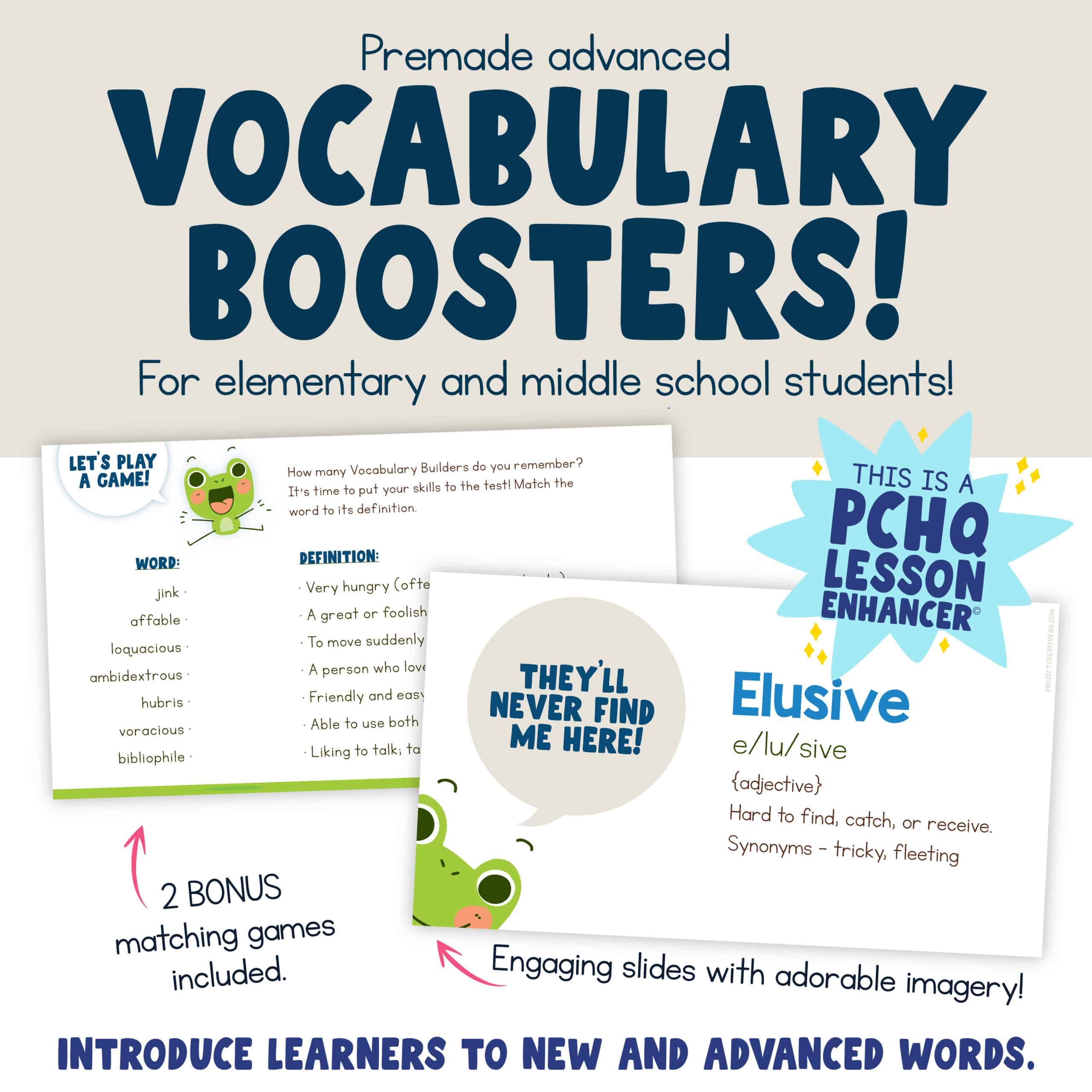
All of our products are designed to enhance elementary learning and captivate young, inquisitive minds.
See for yourself! Check out our FREE Language and Math Product Sample Pack.
📺 Get them learning with YouTube!
Beat the summer brain drain with engaging activities, and explore our handpicked list of 27 YouTube channels to prevent summer learning loss.
Your kids will thank you!
Prevent summer brain drain and keep your child’s mind active with fun and challenging digital learning tools. Just remember to balance screen time with offline experiences for a well-rounded and enriching summer routine.
9. Use Games to Enhance Their Vocabulary
Using activities and games as vocabulary development activities during the summer break is an effective and enjoyable approach to enhancing their language skills and shaking that summer brain drain.
Games provide a dynamic and interactive environment where kids can engage with words and expand their vocabulary effortlessly. Once again, there’s that learning in disguise!
Here are some fun games and activities where elementary-aged kids can practice their vocabulary skills:
🃏 Board Games like Upwords, Scattergories, Tapple, and Balderdash
😺 Noun Memory Matching Game
📘 Books with Rich Vocabulary
💬 Word of the Day Challenge
🎨 Pictionary
✏️ Vocabulary Scavenger Hunt
🧩 Crossword Puzzles
🎲 Story Dice
🎯 Rebus Puzzles
💡 Teacher Tip: Learn new words each week as a family!
Make this summer a memorable linguistic adventure by committing, as a family, to learning a new word every week.
Encourage everyone to actively embrace the word of the week in their conversations, stories, and daily activities. This repetition will not only deepen the understanding of each word but also seamlessly integrate them into your everyday language.
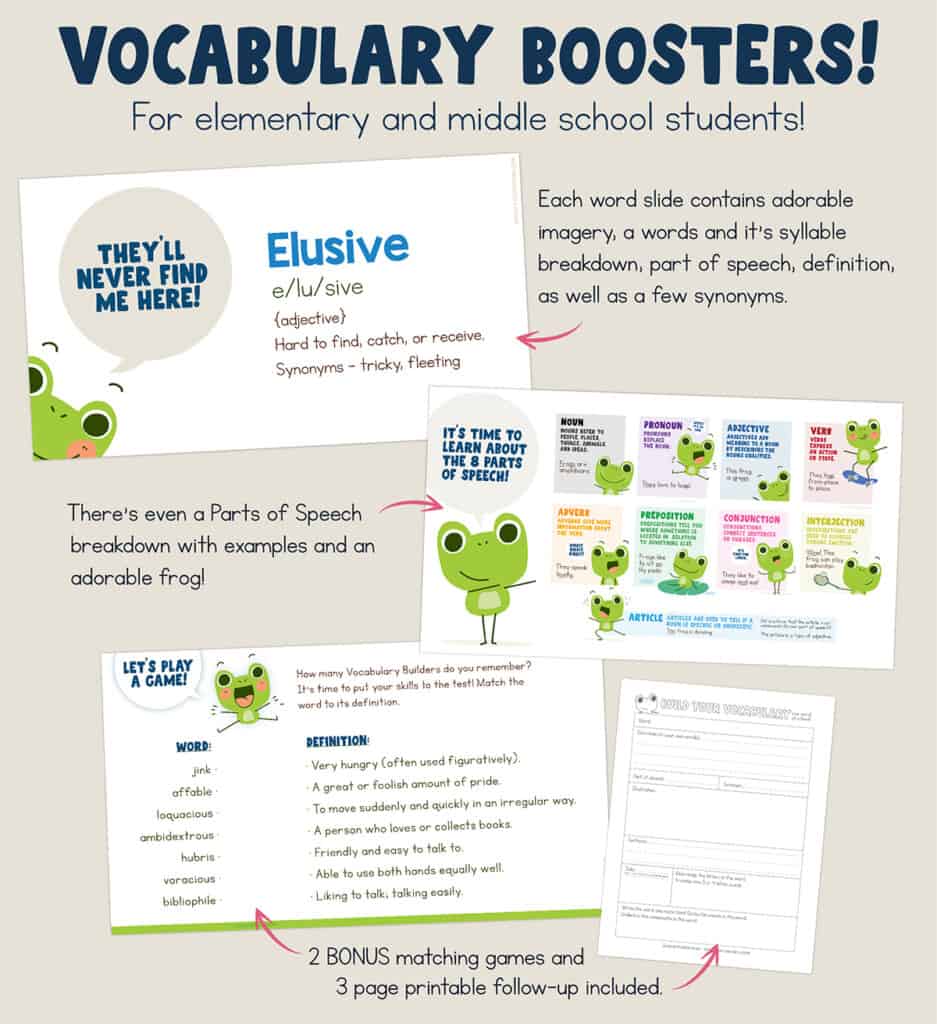
To make the experience even more memorable, consider creating a family dictionary. Designate a notebook or a digital document where each family member can take turns adding a word, along with its definition, examples, an illustration, and even personal anecdotes related to its usage.
This collaborative effort not only serves as a valuable reference for future word recall but also strengthens family connections and fosters a sense of shared achievement.
By transforming vocabulary building into a playful experience, you can foster their love for language and empower them with a rich and diverse vocabulary while they’re on summer break.
It Is Possible to Stop the Summer Brain Drain!
With a little planning, resources like this blog, and some creativity, it’s entirely possible to prevent that drastic loss of knowledge and keep your child’s brain engaged during the summer months.

💡Teacher Tip: Pin this post!
Don’t let this valuable blog slip away! Create a dedicated list or folder where you can save insightful blogs, like this one, filled with helpful information and creative ideas.
Unlock the Benefits of Keeping Kids Engaged This Summer
There are so many benefits to keeping kids busy learning over the summer break. Here are just a few:
✅ prevent summer learning loss;
✅ help children retain information and skills they learned during the school year;
✅ set them up for success in the upcoming school year;
✅ enhance critical thinking, problem-solving, and creativity;
✅ boost confidence and self-esteem;
✅ expand cultural awareness;
✅ connect learning to real-life experiences;
✅ promote independence;
✅ support smooth transitions to new educational environments;
✅ provide opportunities for children to explore their interests and passions;
✅ foster a love of learning and curiosity that can last a lifetime.
There you have it! Keep your kids engaged and prevent the summer brain drain with fun activities that offer learning opportunities throughout the break.

The Wrap-Up: Avoid the Summer Brain Drain
The summer slide is a real concern for parents and educators, but it’s not inevitable.
By following the tips outlined in this blog and encouraging the elementary-aged kids in your life to stay engaged in learning over the summer by making learning fun, you will help them avoid the summer brain drain and keep their academic skills sharp.
Remember, learning should be fun, so make sure to incorporate enjoyable activities into your child’s summer routine. With a little effort, your child will be ready to start the next school year on the right foot.
Explore our Collection of Fun Educational Games and Informative Blog Posts
Our vast collection of resources is designed to support elementary students, parents, and educators in creating engaging and enriching learning experiences. From interactive games that spark curiosity to informative blog posts that provide valuable insights, we have something for everyone!
Check out what we have to offer!
🧮 Math
🔢 No Prep Math Fact Dice Game Addition and Division Practice
🤣 Math Jokes for Kids and Teachers
🤓 No-Prep Digital Math Games Lesson with Worksheets
🧩 Crypto-Riddles Math Fact Practice
🔢 Montessori Command Cards: 4 Operations BUNDLE
❎ 120 Distributive Law of Multiplication Command Cards + Answers & Anchor Chart
⚓️ 140 Printable Order of Operations Task Cards With Answers & Anchor Chart
👀 Outdoor Scavenger Hunt Printable Card Game
📚 Language
😼 Carl the Cantankerous Cat
📚 Story Elements Dice Game with Graphic Organizer
💬 Parts of Speech Scavenger Hunt
🔡 Alphabet Scavenger Hunt Printable
🚀 Vocabulary Booster + Printable Graphic Organizer Vol 2
🚀 Vocabulary Booster + Printable Graphic Organizer Vol 1
🐷 Noun Memory Animal Matching Game
😺 Carl the Cantankerous Cat Digital Picture Book + Printable Activity Pack
🏠 Indoor Scavenger Hunt
👀 Outdoor Scavenger Hunt
🤩 Miscellaneous Fun and Learning
🧪 Periodic Table of Elements Lessons
🎲 Movement Dice Game – Just Roll With It
😻 Cat-Themed Printable Tic Tac Toe Game
😸 Cat Emoji Set
😁 Emojis Faces Set
🤖 Build a Robot Pack #1
🦾 Build a Robot Pack #2
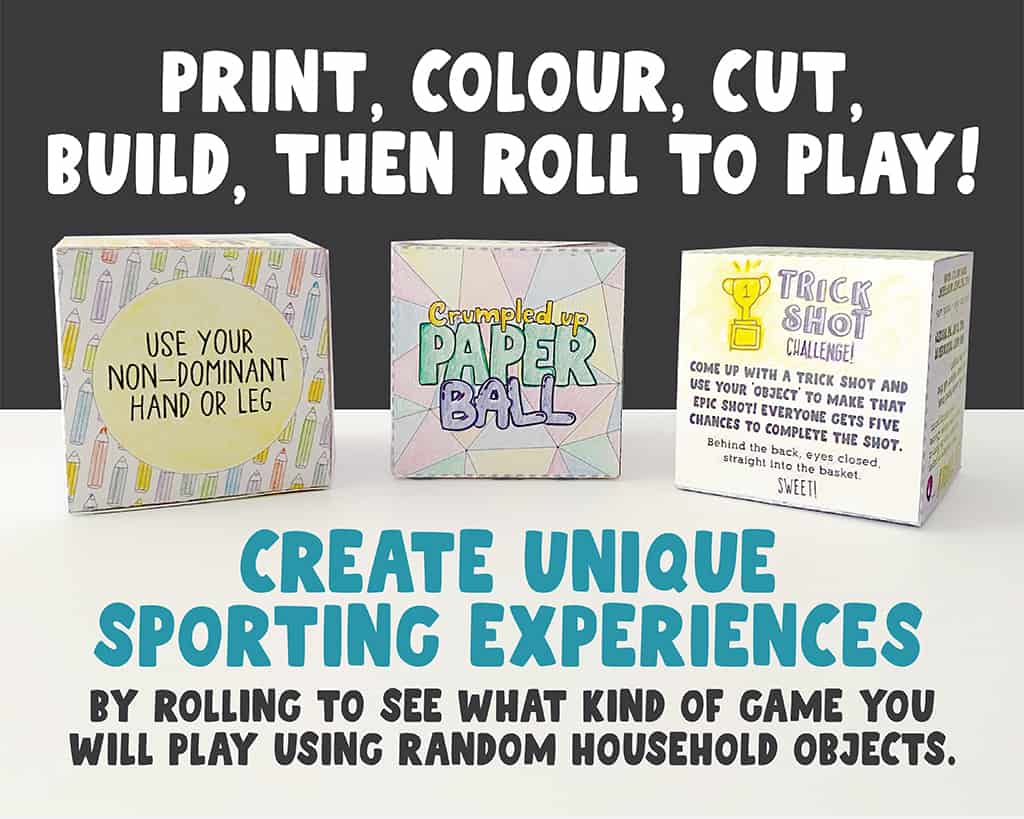
📰 Have You Read These Blogs Yet?
🎯 15 Benefits of Using Games in the Classroom
👀 How to Make a Scavenger Hunt for Kids in 9 Steps
🏃🏽♂️The Best Neighborhood Walk Scavenger Hunt & 13 Different Ways to Use It
🧩 8 Easy Rebus Puzzles with Answers
📝 11 Ways to Use Our Roll A Story Dice Game
🎲 15 Educational Games With Three Dice for Kids (+ FREE Printable Dice)
💡 Your Kids Need This Activity Book with Unique Drawing Prompts
🔢 21 Fun Math Games with Dice to Try With Kids 8-12 (+ FREE Printable Dice)
💬 The Ultimate 13 Vocabulary Development Activities for Kids
🧮 9 Montessori-Aligned Math Activities for Elementary Students











